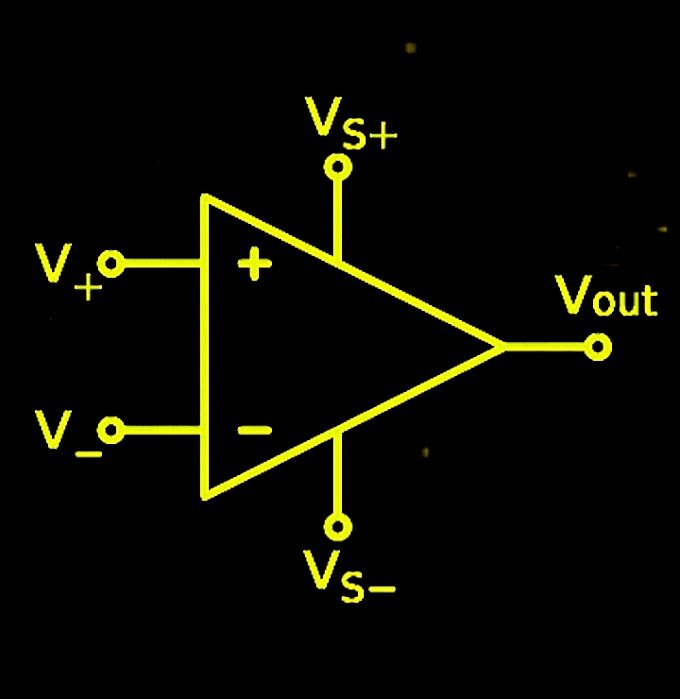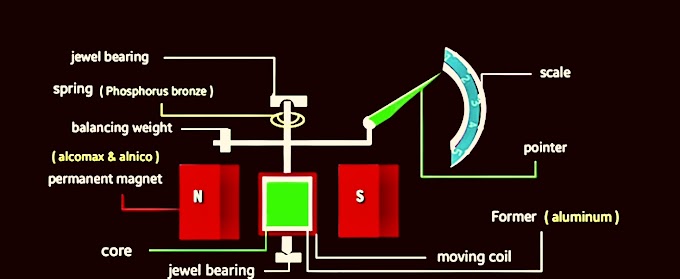here in this article we will see what is potentiometer and its construction and working
what is potentiometer?
a potentiometer is a device which is used for measuring and comparing the emf's of different cells and for caliberation and standardizing voltmeter, ammeter etc.
potentiometer is used for measuring the potential difference instead of voltmeter, voltmeter is convenient to use and it is used for small operations because the potentiometer gives the accurate measurment of potential difference, current and resistance.
principle of action is that of potentiometer an unknown emf and potential difference is measured by balancing it completely or in the parts, against a known difference of potential
 |
| potentiometer construction |
this image credit goes to the edu point you tube channel this picture is take from his video
construction
as in the fig it simply consists of a German silver, constantan or magnine wire usually it is two or three meters, it is stretched between the two terminals and it is connected to the copper strips.
the meter rod is connected at the bottom of the potentiometer
the stretched wire is connected with a rheostat in the series combination for vary the resistance, there is a battery which flows the steady current that is constant current through the resistance wire and the ammeter is connected to the battery to vary the current is constant further the wire is connected to the one end and the other end is connected to the jockey, as the wire is of uniform crossection throughout, then we see the fall in potential across it, is uniform and the drop between any two points is proportional to the distance between them.
as shown in the fig the battery is connected vtg is spread over the rheostat and the resistance of wire. we see the progressive fall of potential as we go along the wire if r is the resistance per cm of this wire, l is the length, then for a current amperes, the fall of potential over the whole length of wire is IRL volts
working principal
the two cells whose emfs are to be compared and joined as shown always remembering the positive terminal of the cell and the battery must be joined together of the both cells.
on the other hand the negative terminal of the cell is connected to the galvanometer with the help of two way switch this cells are compared one by one comparatively by the galvanometer
first we connect the galvanometer to the first cell E1 the current flowing through the galvanometer is zero and it is connected to the jockey, this jockeys head is joined at the position where the deflection of the galvanometer is zero that is i=0
as shown in the fig the potential difference between the point a and b is Vab = IR1 here the resistance is the magnine wire from a to b this magnine wires length is measured by the ruler up-to the point b here we take the length of wire as L the the resistance represents as R
in the fig. the current flowing through the point a and b is zero it means that the potential difference across the point a and b is same as the potential difference of the cell.
for comparing the second cell is connected to the galvanometer and the jockey is joined to magnine wire where the deflection of galvanometer is zero. as the first cell here the current is also zero i=0 here the potential difference between point p and q is the emf of the second cell E2 and for the resistance we take the magnine wire from point p to q this length of wire is effective length of the circuit as the first cell potential difference of the point p and q is same as the potential difference of the cell
it is simply result found by the comparison of length of resistance because the the current is constant and the roh (ρ ) is constant because the material used in the both circuits is same and the cross sectional area is also the same
lets see the measurment of internal resistance of cell in this circuit only one cell whose resistance is to be measured is connected to the galvanometer and the jockey from the galvanometer is joined to the magnine wire in this fig. the effective length X1 is from point a to b of magnine wire the emf of the cell E1 is the potential difference between the point a and b because the the current flow to the galvanometer is zero I = 0












No comments:
Post a Comment